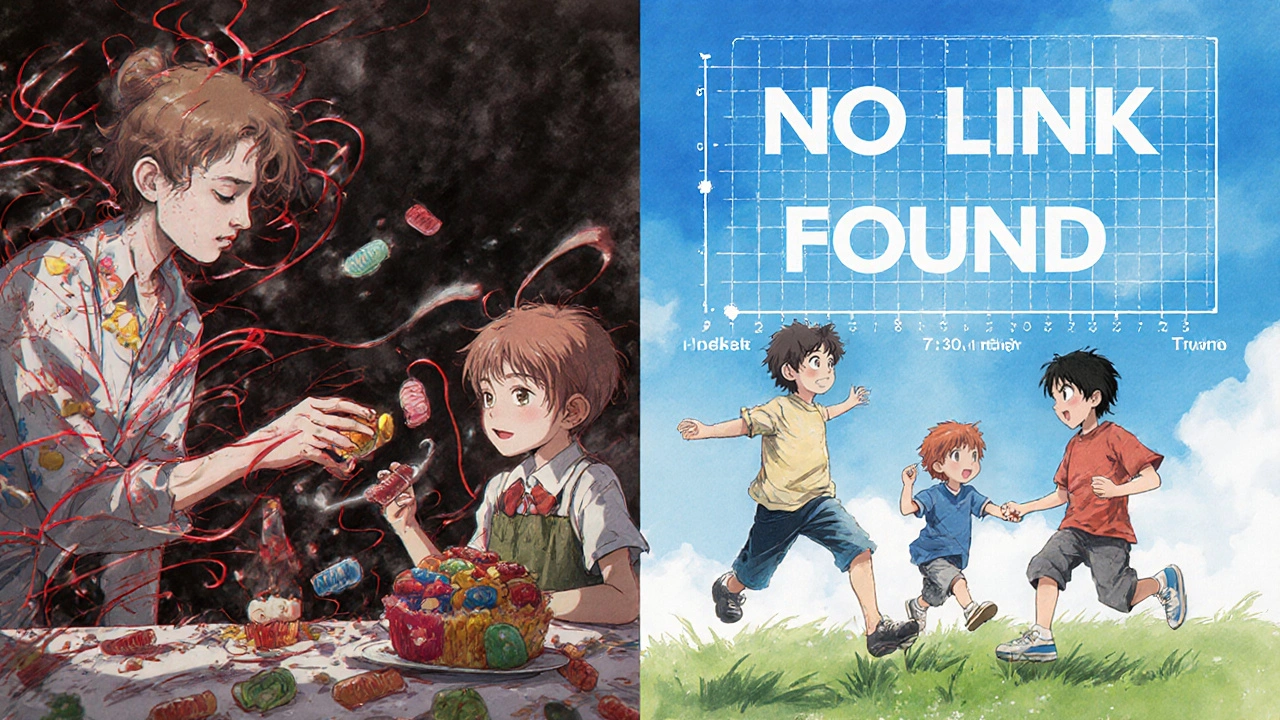How many times have you heard that you need to drink eight glasses of water a day? Or that chewing gum stays in your stomach for seven years? These aren’t just harmless jokes-they’re myths that shape how people make decisions about their health. And when those myths stick, they can lead to real harm: missed diagnoses, unnecessary worry, or even avoiding proven treatments. The truth is, many of the things we believe about our bodies aren’t true. But they’re easy to believe because they sound reasonable, come from trusted sources, or are repeated so often they feel like common sense.
Myth: You Lose 70-80% of Your Body Heat Through Your Head
This one’s been around for decades. You’ve probably been told to wear a hat in winter because “you lose most of your heat through your head.” It sounds logical-if your head’s uncovered, you’ll get cold fast. But here’s the reality: your head makes up about 7-10% of your total body surface area. So, if you’re not wearing a hat, you’ll lose about 7-10% of your body heat through it. Same as if you left your hand or your neck exposed. The myth started from a 1950s U.S. military study where subjects were bundled up except for their heads. Of course, the head lost the most heat-it was the only part exposed. But that doesn’t mean it’s special. Heat loss is proportional to surface area. If you go outside in a swimsuit, your entire body will lose heat. Covering any exposed part helps. Wearing a hat? Great idea. But don’t think it’s magic.
Myth: You Need Eight Glasses of Water a Day
That number-eight glasses-is everywhere. On TV, in apps, on water bottles. But where did it come from? Not science. In 2002, Dr. Heinz Valtin from Dartmouth Medical School reviewed decades of research and found zero peer-reviewed studies backing the eight-glass rule. The recommendation likely came from a 1945 food and nutrition report that said adults need about 2.5 liters of water daily… and then noted that most of that comes from food and other drinks. That part got ignored. Your body gets water from coffee, tea, soup, fruits, even bread. Thirst is your body’s natural signal. If you’re not thirsty and your urine is pale yellow, you’re probably fine. Forcing down water you don’t need won’t flush toxins or improve your skin. In fact, drinking too much can be dangerous-leading to hyponatremia, a condition where sodium levels in your blood drop dangerously low. Listen to your body. It knows better than any arbitrary number.
Myth: We Only Use 10% of Our Brain
This myth shows up in movies, ads, and self-help books promising you can unlock your “hidden potential.” It’s tempting. Who wouldn’t want to believe they’re only using a fraction of their brain? But brain imaging studies-fMRI, PET scans, even simple EEGs-show activity across the entire brain, even during rest. Every part has a function. Damage to even a small area can cause serious loss of speech, movement, or memory. Neuroscientists at the University of Alabama at Birmingham confirmed in 2022 that there’s no “unused” portion. Evolution doesn’t waste energy. The brain makes up 2% of your body weight but uses 20% of your energy. If 90% of it was idle, we’d have evolved a smaller, more efficient one. The myth likely started from a misquote of psychologist William James in the 1920s, who said we’re only using a small portion of our mental potential-not our physical brain. Big difference.
Myth: Sugar Makes Kids Hyperactive
Parents swear it. Birthday parties, candy, soda-suddenly, kids are bouncing off the walls. It feels real. But over 23 double-blind, controlled studies have shown no link between sugar and hyperactivity. A major 2021 meta-analysis in JAMA Pediatrics reviewed every high-quality study done since the 1970s. No effect. Not even in children diagnosed with ADHD. So why does it feel true? Confirmation bias. We expect sugar to make kids wild, so we interpret normal behavior as hyperactivity. Plus, parties are exciting. Kids are running around, laughing, surrounded by noise and treats. That’s not sugar. That’s context. And here’s the kicker: sugar industry lobbying in the 1990s helped keep this myth alive. Internal documents from the Sugar Association show they funded studies designed to downplay sugar’s role in behavioral issues. The myth persists because it’s convenient-it lets parents blame a treat instead of looking at sleep, routine, or screen time.

Myth: Superfoods Like Acai and Goji Berries Are Miracle Cures
They’re expensive. They’re trendy. They’re packed with antioxidants. But “superfood” isn’t a scientific term. It’s a marketing label. The European Food Information Council reviewed over 150 studies on so-called superfoods and found no evidence that any single food provides extraordinary health benefits beyond what a balanced diet already delivers. Acai berries? They’re rich in antioxidants, yes. But blueberries, blackberries, spinach, and even apples have similar or higher levels. Goji berries? Nutritious, but not magic. Your body doesn’t need exotic imports to get the nutrients it needs. In fact, focusing on one “superfood” can lead people to ignore the bigger picture: eating a variety of whole foods, cutting processed items, and staying active. You don’t need to spend $30 on a bag of goji berries when a $2 apple will do just as well.
Myth: Chewing Gum Stays in Your Stomach for Seven Years
This one’s a classic parental warning. “If you swallow gum, it’ll stay in your gut for years!” It’s meant to scare kids out of chewing it. But the truth? Your digestive system isn’t fooled. Gum base is indigestible-yes. But it doesn’t stick around. It moves through your system just like any other food. Dr. Ian Tullberg, a family medicine specialist, confirmed in 2022 that gum passes through in two to four days. It doesn’t get digested, but it doesn’t get stuck either. Your intestines are designed to move things along, even things that don’t break down. The only risk? Swallowing large amounts of gum over time, especially in young children, which could cause blockages. But one piece? No problem. Your body handles it fine.
Why Do These Myths Stick?
It’s not just about ignorance. It’s about psychology. Myths often tap into things we already believe: that our bodies are fragile, that simple fixes exist, that nature or tradition is wiser than science. They’re simple, memorable, and emotionally satisfying. A myth like “sugar causes hyperactivity” gives parents an easy explanation for chaotic behavior. The truth-that kids are excited, tired, or overstimulated-is messier. It requires looking at sleep, routine, environment. That’s harder. Also, myths get repeated. A 2023 study found that people exposed to a myth even once are more likely to remember it as true later, even if they’re told it’s false. That’s the “familiarity backfire effect.” The more you hear it, the more it feels real.

How to Fight Back: The Truth Sandwich
Just saying “that’s wrong” doesn’t work. In fact, it can make people cling harder to the myth. Experts now recommend the “truth sandwich” method: start with the fact, briefly mention the myth (clearly labeled as false), then end with the truth again. For example: “Your brain uses 100% of its parts every day. Some people think we only use 10%, but that’s a myth from a 1920s misunderstanding. Modern scans show every area of your brain has a job-even when you’re resting.” This approach reduces the chance of reinforcing the myth. It also helps people remember the correct info. The American Association for the Advancement of Science recommends this method because it improves retention by nearly 50% compared to just saying “no, that’s false.”
What You Can Do
Don’t just accept what you hear. Ask: Where did this come from? Is it a study? A news article? Or just something someone said? Look for sources from universities, medical journals, or health agencies like the CDC or WHO. If it’s a “miracle cure” or a “secret truth,” be skeptical. Real science doesn’t hide. It’s published, tested, and repeated. Talk to your doctor or pharmacist. They’re trained to separate myths from facts. And if you’re a parent, teacher, or caregiver-correct the myths gently. Don’t shame. Say: “I used to believe that too, but here’s what the science says.” That’s how change happens. Not with outrage. With clarity.
Myths Are Everywhere-But You Don’t Have to Believe Them
Health myths aren’t harmless. They delay care. They waste money. They create fear. But they can be corrected. The tools are out there: peer-reviewed studies, expert interviews, fact-checking sites like Snopes and WHO’s Myth Busters. You don’t need a medical degree to spot a myth. You just need to ask: Is this backed by evidence? Or is it just a story that sounds right? Start paying attention. Question the easy answers. And when you find a myth, share the truth. Not with anger. Not with judgment. Just with facts. Because in the end, knowledge isn’t just power-it’s protection.





